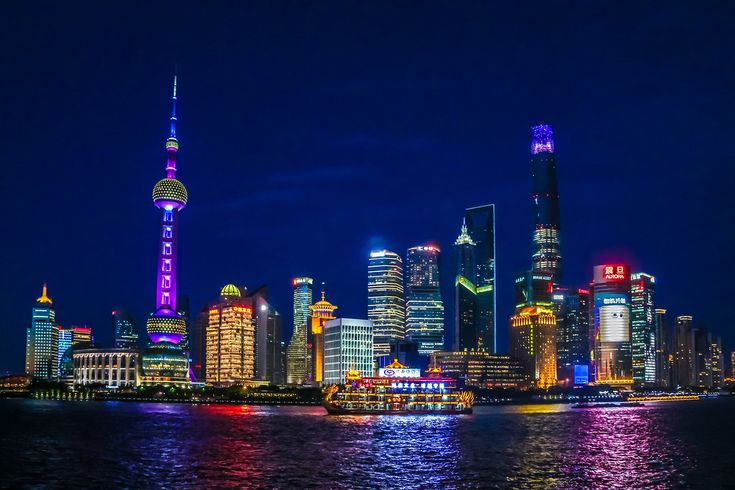J. Albert Gamboa l 30 August 2024 l Top Business, The Manila Times

SHANGHAI – China’s richest city in terms of gross domestic product (GDP) topped the 2024 Statista Ranking of Chinese Cities according to their regional influence. Based on German research firm Statista’s latest data, Shanghai’s GDP reached 4.5 trillion yuan ($640 billion) in 2022 compared to that of Beijing at 4.1 trillion yuan ($590 billion).
With a population of 29.9 million, Shanghai is also China’s biggest metropolis and the third largest in the world next to Tokyo and Delhi. This coastal city lies on the Yangtze River delta beside the East China Sea bordering Korea and Japan. Shanghai’s strategic location has made it a global hub of trade and finance. In fact, the Port of Shanghai is the world’s busiest container port which has overtaken Singapore since 2010.
Revisiting Shanghai after almost two decades, I’m amazed at the rapid pace of development in the emerging Pudong district, which became China’s pilot free trade zone in 2013. Located on the east bank of the Huangpu River that flows through central Shanghai, Pudong is directly across the historic city center on the river’s Puxi west bank.
Last week I joined the Huangpu River cruise along with a group of Filipino journalists who were in town as guests of the China Public Diplomacy Association (CPDA). Established 11 years ago, the CPDA is a non-profit organization that coordinates international exchanges through people-to-people channels.
Prior to the cruise, we had a buffet dinner at the revolving restaurant of the 468-meter-tall Oriental Pearl Tower in the skyscraper-filled Lujiazui Financial and Trade Zone of Pudong. The iconic tower provides panoramic vistas of the city, but the evening cruise offers even more stunning views of The Bund –Shanghai’s cosmopolitan waterfront district with its lavish Art Deco buildings built in the 1920s and 1930s. The scenic route along the Huangpu River is comparable to the Hong Kong harbor and Chicago river cruises.
Highlights of our trip include a dialogue with members of a think tank called the Shanghai Institutes for International Studies (SIIS); a guided tour of the Huawei Shanghai Research Center; a visit to the factory of Liwayway Group, the biggest Filipino-owned company in China; and a joyride aboard the Shanghai MagLev, the world’s fastest train.
SIIS is a research institution founded in 1960 as one of China’s earliest think tanks dedicated to international studies. We exchanged ideas with a group of academicians led by Dr. Li Kaisheng, who has been a visiting scholar at the Asian Center of UP Diliman since 2015. The advocacy for visa-free entry of Filipino tourists to China was foremost among our topics of discussion aimed at improving cultural relations despite the ongoing geopolitical tensions in the West Philippine Sea.
Huawei Technologies’ corporate campus in Shanghai was designed and built by Chicago-based architectural firm Skidmore, Owings & Merrill. Known as the Huawei Shanghai Research Center, it takes advantage of the city’s valuable talent pool and neighboring universities. This technologically advanced workplace features a bamboo-filled gallery as well as sustainable systems for flood control and energy efficiency.
Liwayway (China) Co. Ltd. was one of the first foreign-owned firms to set up shop in Shanghai when the city opened its doors to overseas investors in the early 1990s. This was part of Deng Xiaoping’s wave of market reforms to reinvigorate the Chinese economy. Today, Liwayway is among the top three snack-food companies in the entire China and its flagship Oishi brand is considered one of Shanghai’s most famous brands.
Covering a distance of 30.5 kilometers in just eight minutes and 10 seconds, the Shanghai Maglev holds the distinction of being the world’s fastest commercial train service with a top speed of 431 kilometers per hour. Using the Transrapid magnetic levitation technology from Germany, the train line connects Pudong International Airport with the Longyang Road subway station where passengers can interchange to the Shanghai Metro to continue their trip to the city center.
As a major aviation hub in the Asia Pacific region, Shanghai has two international airports in Pudong and Hongqiao. They have surpassed Beijing’s two airports since 2014 in terms of total passenger throughput.
Indeed, Shanghai has been hailed as a unique model in the history of globalization due to its double priority strategy of economic growth consisting of both a free market and state-owned enterprises. The result is a mixed economy with the service sector taking a dominant position that has built up Shanghai’s strength as an international economic center.
===
The author is the chief finance officer of Asian Center for Legal Excellence and vice-chair of the FINEX Ethics Committee. The opinion expressed herein does not necessarily reflect the views of these institutions and The Manila Times. (Photo from Pinterest).
